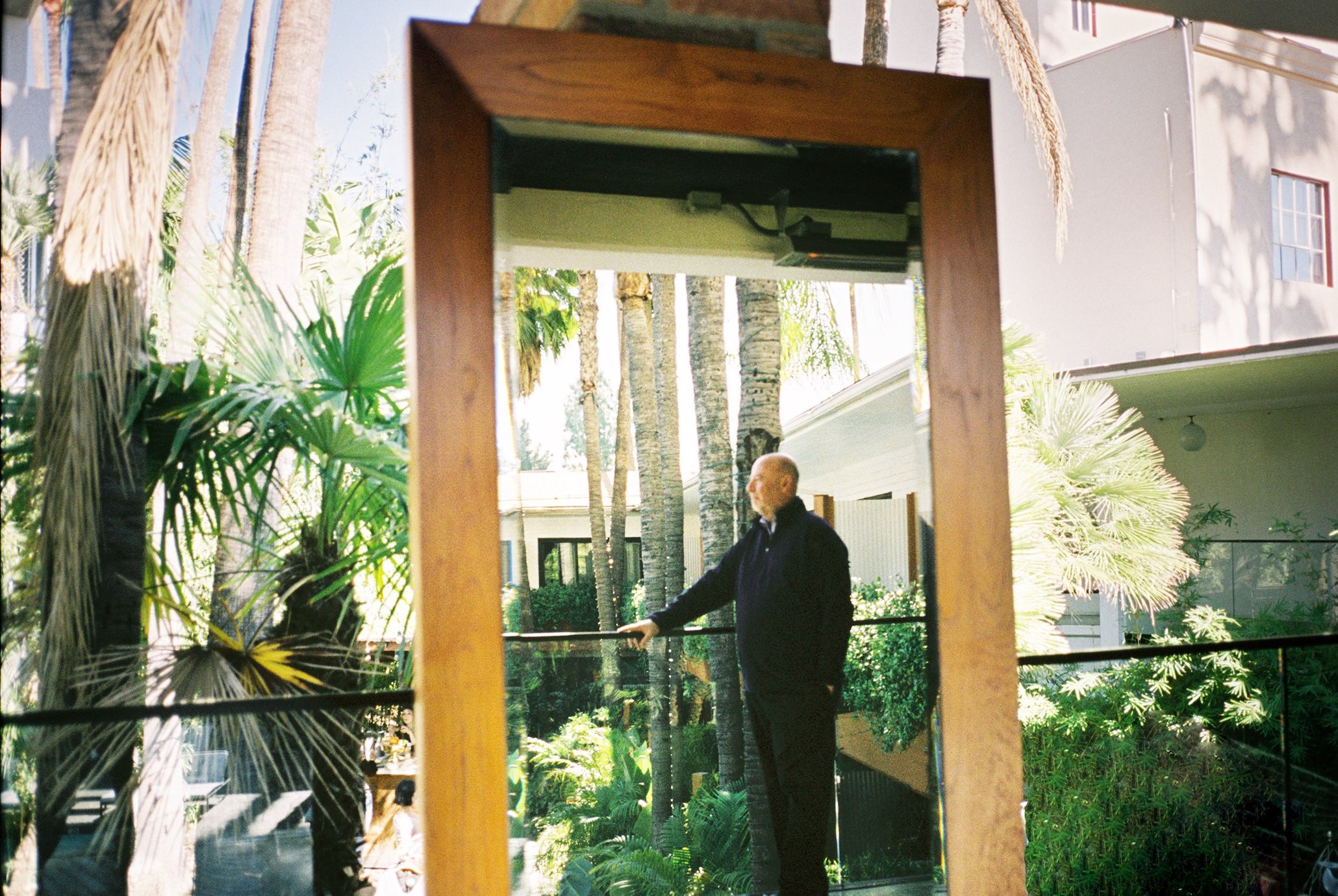
Dean Valentine, art collector and founder of the Felix LA art fair, has fond memories of the first time he attended one. It was in the mid-’90s, “the equivalent of my childhood as an art collector,” he says, when the Chateau Marmont hosted the LA version of New York’s Gramercy International Contemporary Art Fair. As the then-president of Walt Disney Television, he had little in the way of an art history background, but the fair’s convivial atmosphere put Valentine at ease. The galleries, including Blum & Poe and Marian Goodman as well as LA’s Regen Projects, occupied individual rooms, which set the pace of their dealings. Gallerists chatted about their holdings over drinks, sitting on hotel beds, lingering in hallways or meandering from the bar to the pool. It was inexpensive for both fairgoers and exhibitors, and most importantly, it was fun. “Art, sun and alcohol,” Valentine recalls. “An unbeatable combo.”
In the decades since, Valentine has grown into a top collector, a fixture of year-end art magazine power lists and a known scout for emerging talent. He was an early collector of artists John Currin, Takashi Murakami and Kaari Upson, to name a few, and is a member of the Hammer Museum’s Board of Overseers. As his collection grew in size, so did art fairs—but unfortunately, they’ve also gotten significantly less cool. At today’s primary forum for buying and selling art, the financial stakes have made money move at a frenetic pace, and those intimate conversations with gallerists that Valentine credits as his “graduate education” in art (his formal studies were in English) are no longer possible.
“It’s become transactionally oriented,” he says, “and kind of overwhelming in the number of people. There’s an inability to really spend any time with anybody.” Having stopped going to art fairs years ago, he announced his plan to launch Felix LA last July as an antidote to the situation. Opening at The Hollywood Roosevelt hotel in February, coincidentally on Valentine’s Day, Felix LA is his and gallerists Alberto and Mills Morán’s attempt to recapture the joys and intimacy Valentine felt decades ago at the Chateau Marmont. At 40 galleries, it’s a modest size and includes dealers from as far as Guangzhou and Johannesburg, plus locals like Parrasch Heijnen, Château Shatto and Susanne Vielmetter. He describes Felix LA as “affordable” for galleries that have been weighed down by the economic pressures of showing at fairs, and says it will offer a welcome change of scenery from the windowless expo centers he likens to casinos.
“It’s about bringing back the pleasure of the art fair,” says Valentine, who, paraphrasing John Baldessari, promises “no more boring art panels.” Instead, the programming will include stand-up comedy, burlesque and live music, with more projects and entertainment to be announced at the beginning of January. “It’s a way of constructing a fair that’s consistent with the vibe of a city that’s an international creative paradise,” says Valentine, who’s noticed Downtown Los Angeles’ nightlife leaning towards multidisciplinary venues.
At its heart, Felix is a celebration of the city, not only with its sizable contingent of local galleries, but also with its attention to LA’s temperate climate. Galleries have the option of choosing rooms with glass doors that open directly onto the hotel’s pool deck. They’ll have an excellent view of the pool—with its 1988 David Hockney painted-bottom—while potentially making their own mark on LA art history.










 in your life?
in your life?

